Point-Slope Form
An easy way to write the equation of a line if we know the slope and a point on a line.
This post is part of the book Justin Math: Algebra. Suggested citation: Skycak, J. (2018). Point-Slope Form. In Justin Math: Algebra. https://justinmath.com/point-slope-form/
Want to get notified about new posts? Join the mailing list and follow on X/Twitter.
Suppose we want to write the equation of a line with a given slope $m=2$, through a particular point $(3,5)$. In the previous post, we substituted the given information into a slope-intercept equation form $y=mx+b$, solved for $b$, and rewrote the slope-intercept form with $m$ and $b$ substituted so that $x$ and $y$ were the only variables.
However, there is an alternative form, point-slope form, that makes it even easier to write the equation of a line if we know the slope and a point $(x_0,y_0)$ on the line. It is given by
If we know that our desired line has slope $m=2$ and passes through the point $(x_0,y_0)=(3,5)$, then we can substitute directly into point-slope form without performing any additional computations:
This is an accepted form of the equation for a line, so we don’t need to simplify it at all unless we’re asked to do so.
But even if we actually need to find the line in slope-intercept form, it’s still advantageous to begin with point-slope form, because all we have to do is distribute the $2$ and add $5$ to get to slope-intercept form.
Derivation
The point-slope formula is easy to remember, too, because it just says that the slope between any point $(x,y)$ and the reference point $(x_0,y_0)$ needs to be equal to the given slope $m$.
Moving from $(x_0,y_0)$ to $(x,y)$, the amount we go up is $y-y_0$, and the amount we go over horizontally is $x-x_0$, so the slope is just $\frac{y-y_0}{x-x_0}$. Equating this to $m$ and multiplying to get rid of the fraction, we reach point-slope form!
Graphing
To graph a line whose equation is given in point-slope form, we perform the same process as we do to graph a line that is in slope-intercept form, except we start at the reference point rather than at the y-intercept.
For example, consider the line $y-4 = \frac{3}{2}(x-1)$, for which the reference point is $(1,4)$ and the slope is $\frac{3}{2}$. To graph this line, we start at $(1,4)$, go up $3$ and over $2$ to the point $(3,7)$, and draw a line through the two points.
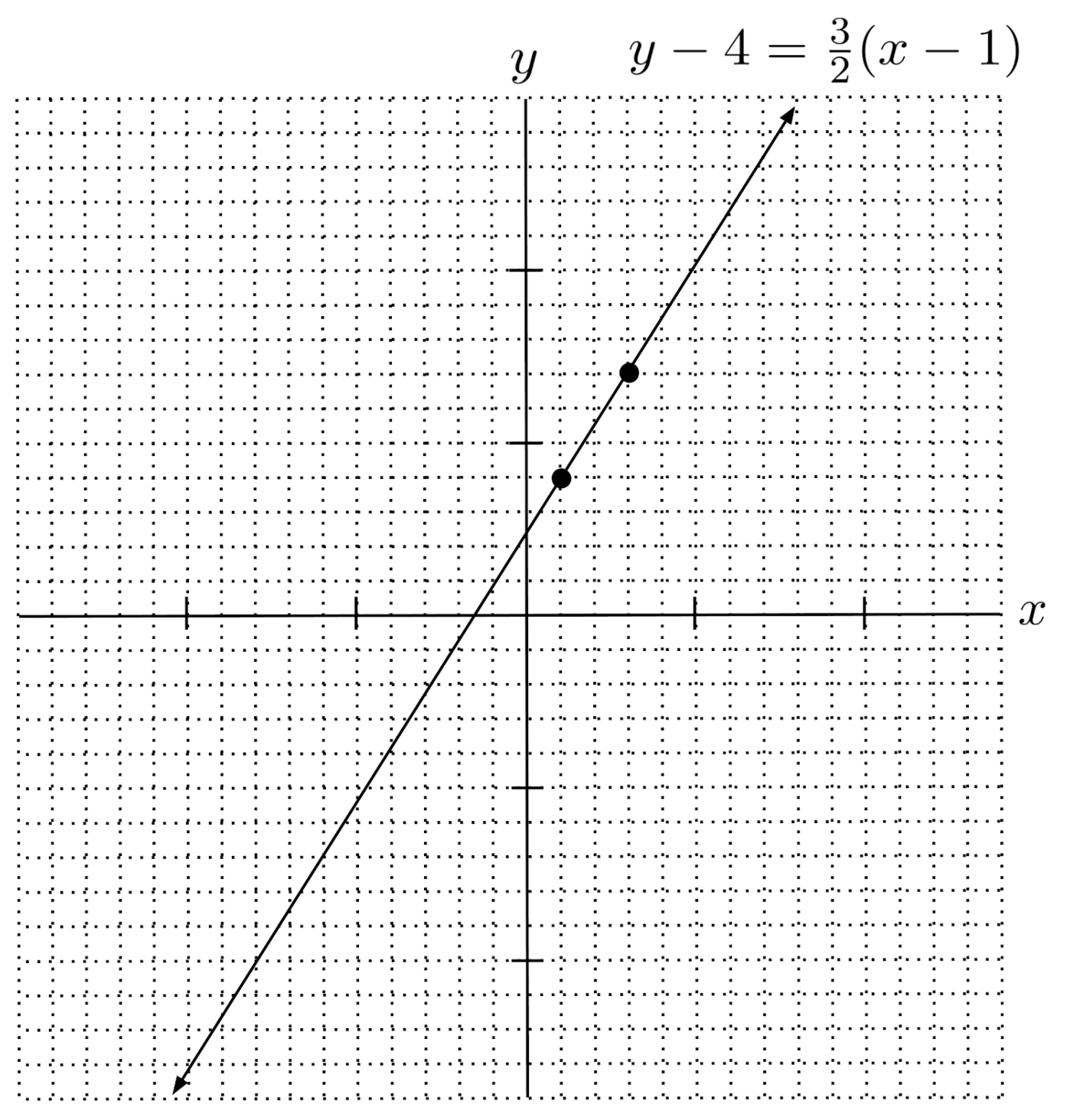
Final Remark
One thing to watch out for in point-slope form: be careful about negatives.
For example, the point-slope form of a line with slope $2$ that goes through the point $(-3,-5)$ is NOT given by $y-5=2(x-3)$. This is the line that goes through the point $(3,5)$, not $(-3,-5)$.
The line that goes through $(-3,-5)$ actually involves addition rather than subtraction, because the negatives cancel the subtraction in the original formula for point-slope form.
Exercises
Write the point-slope equation of the line that goes through the given point, with the given slope. (You can view the solution by clicking on the problem.)
$1) \hspace{.5cm} (1,5) \hspace{.5cm} m=2$
Solution:
$y-5=2(x-1)$
$2) \hspace{.5cm} (-2,3) \hspace{.5cm} m=8$
Solution:
$y-3=8(x+2)$
$3) \hspace{.5cm} \left( \frac{1}{2}, 2 \right) \hspace{.5cm} m=\frac{3}{8}$
Solution:
$y-2=\frac{3}{8} \left( x- \frac{1}{2} \right)$
$4) \hspace{.5cm} \left( -\frac{4}{7},-\frac{8}{13} \right) \hspace{.5cm} m=-\frac{12}{5}$
Solution:
$y + \frac{8}{13} = -\frac{12}{5} \left( x + \frac{4}{7} \right)$
Write the point-slope equation of the line that goes through the given points. (You can view the solution by clicking on the problem.)
$5) \hspace{.5cm} (2,-1) \hspace{.5cm} (1,1)$
Solution:
$y+1=-2(x-2)$
$\text{or } y-1 = -2(x-1)$
$6) \hspace{.5cm} (1,8) \hspace{.5cm} (-4,-7)$
Solution:
$y-8=3(x-1)$
$\text{or } y+7 = 3(x+4)$
$7) \hspace{.5cm} \left( \frac{1}{3}, 3 \right) \hspace{.5cm} (1,4)$
Solution:
$y-3=\frac{3}{2}\left( x-\frac{1}{3} \right)$
$\text{or } y-4 = \frac{3}{2}(x-1)$
$8) \hspace{.5cm} \left( -\frac{3}{4}, \frac{1}{2} \right) \hspace{.5cm} \left( \frac{1}{2}, \frac{3}{4} \right)$
Solution:
$y-\frac{1}{2} = \frac{1}{5} \left( x+\frac{3}{4} \right)$
$\text{or } y-\frac{3}{4} = \frac{1}{5} \left( x-\frac{1}{2} \right)$
Graph the following lines. (You can view the solution by clicking on the problem.)
$9) \hspace{.5cm} y-2=3(x-4)$
Solution:
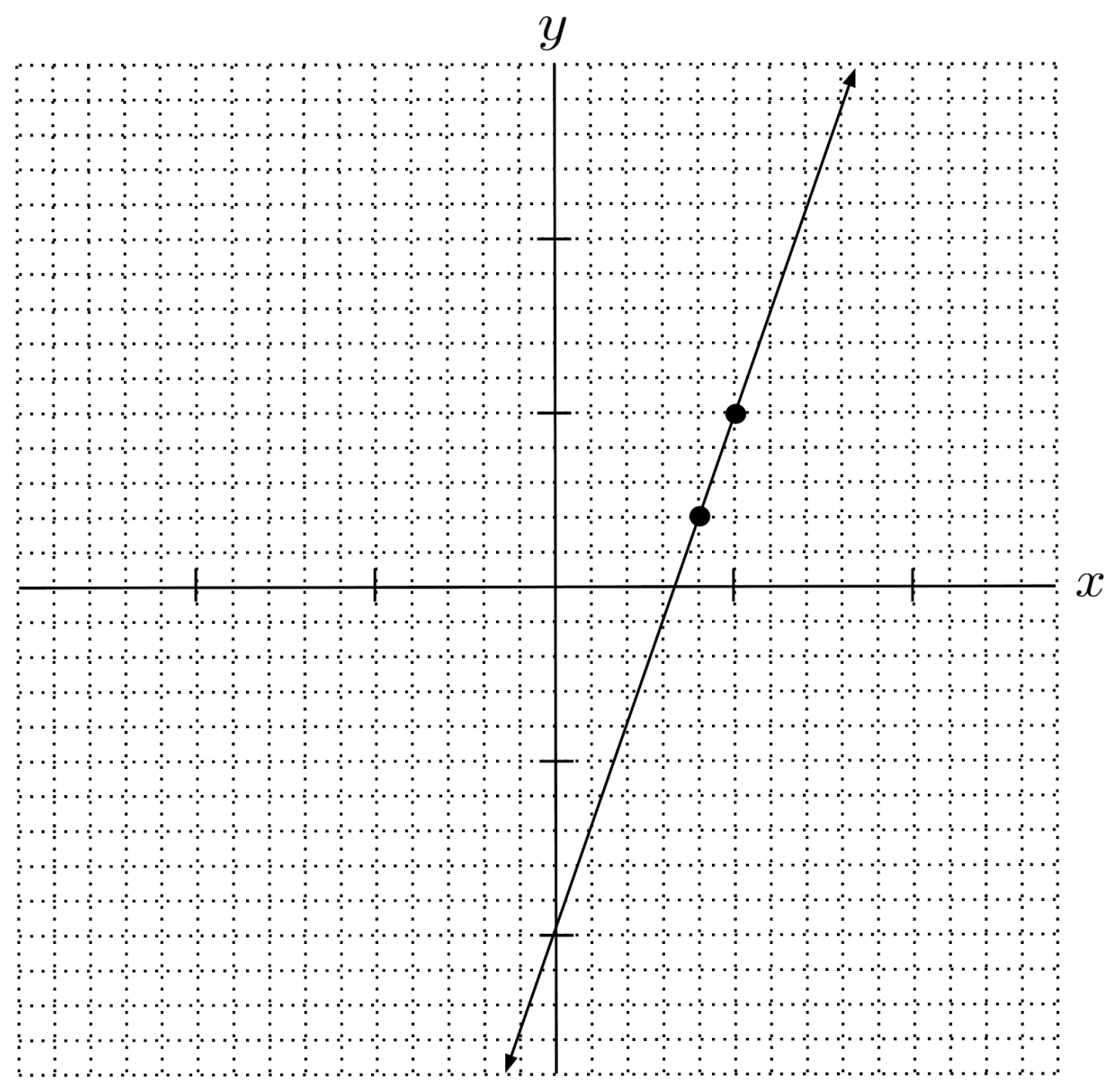
$10) \hspace{.5cm} y+7=-2(x-2)$
Solution:
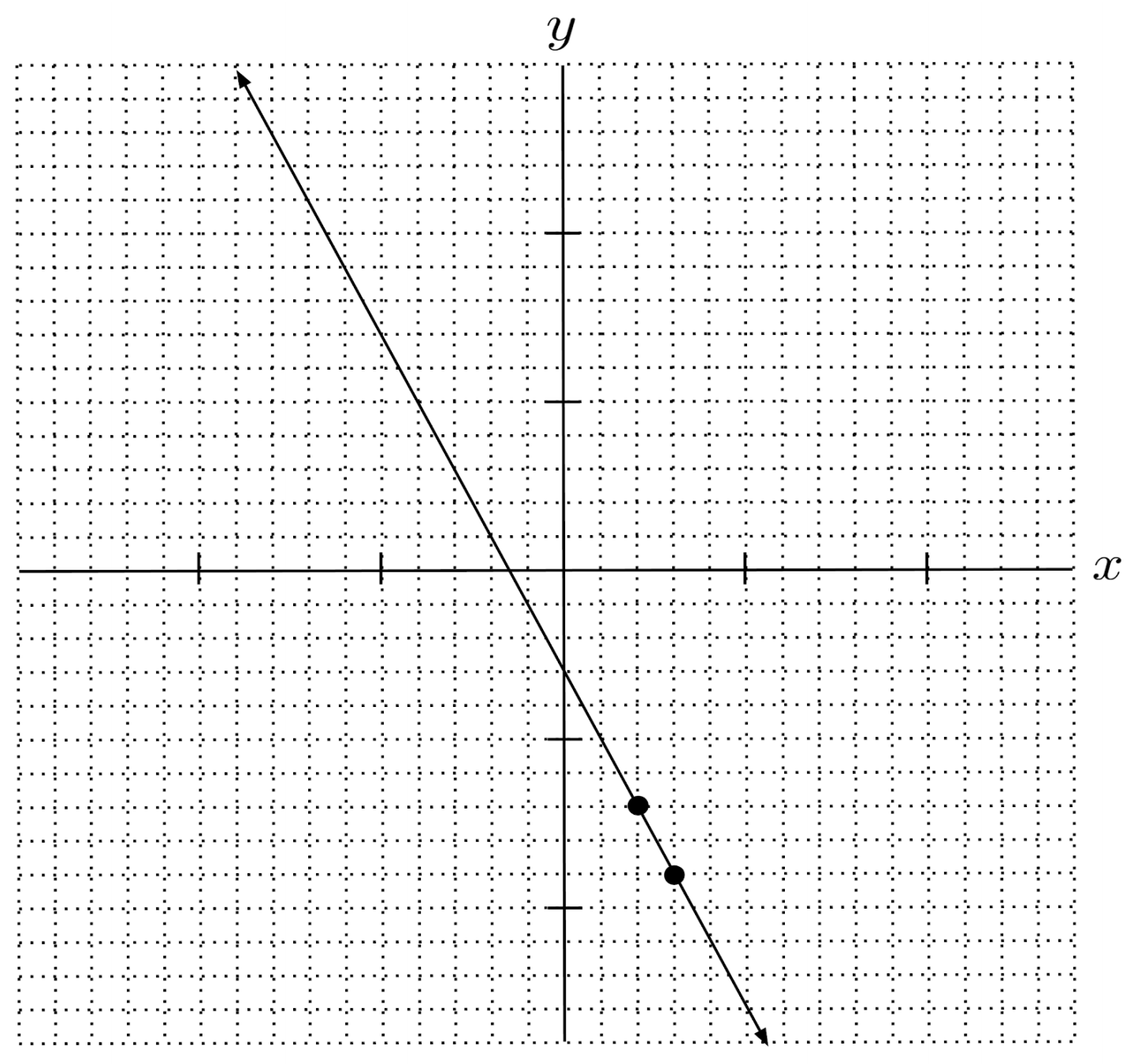
$11) \hspace{.5cm} y-\frac{1}{2} = \frac{1}{3}(x+1)$
Solution:
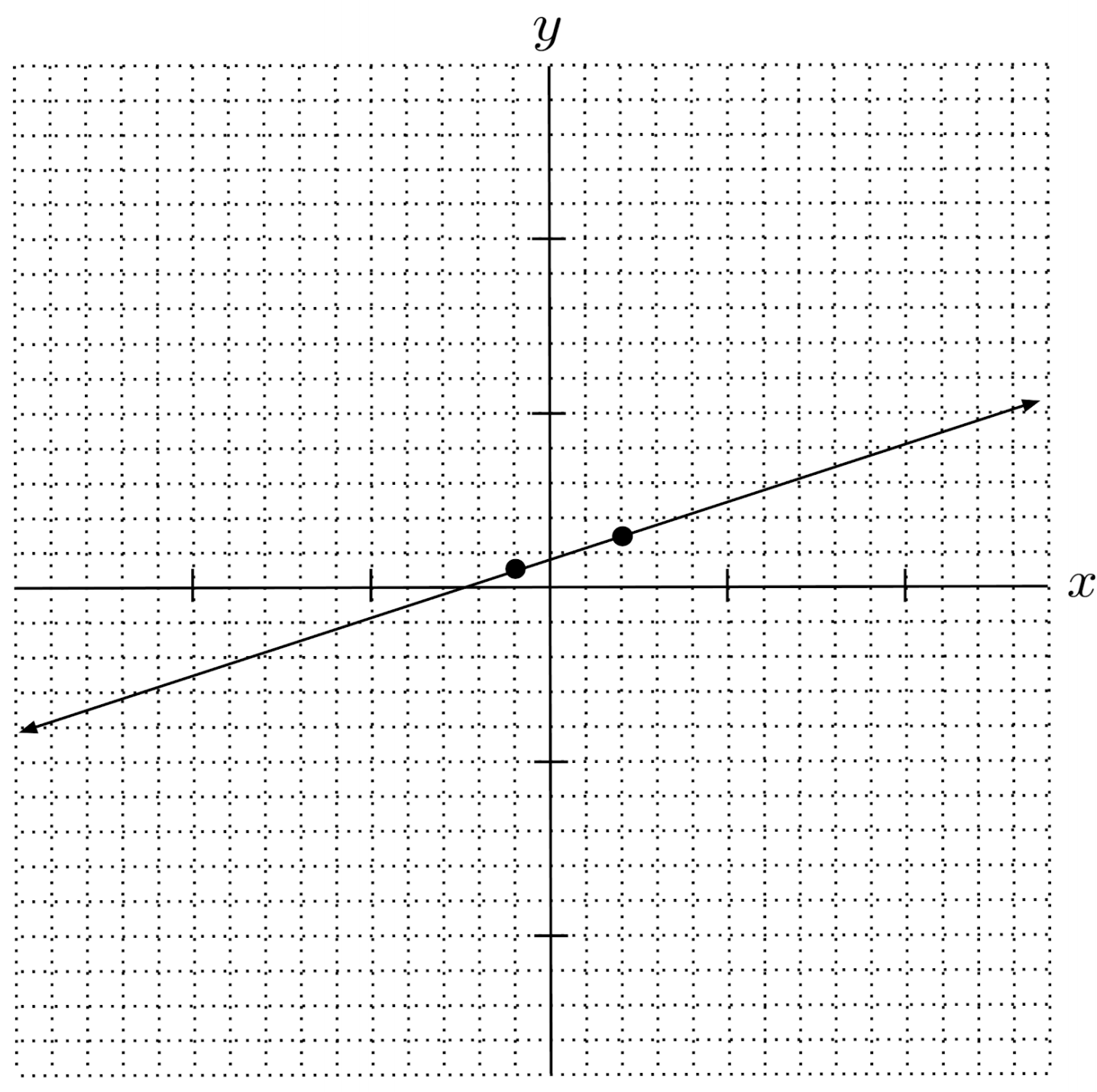
$12) \hspace{.5cm} y+\frac{5}{2} = -\frac{2}{5}\left( x-\frac{1}{4} \right)$
Solution:
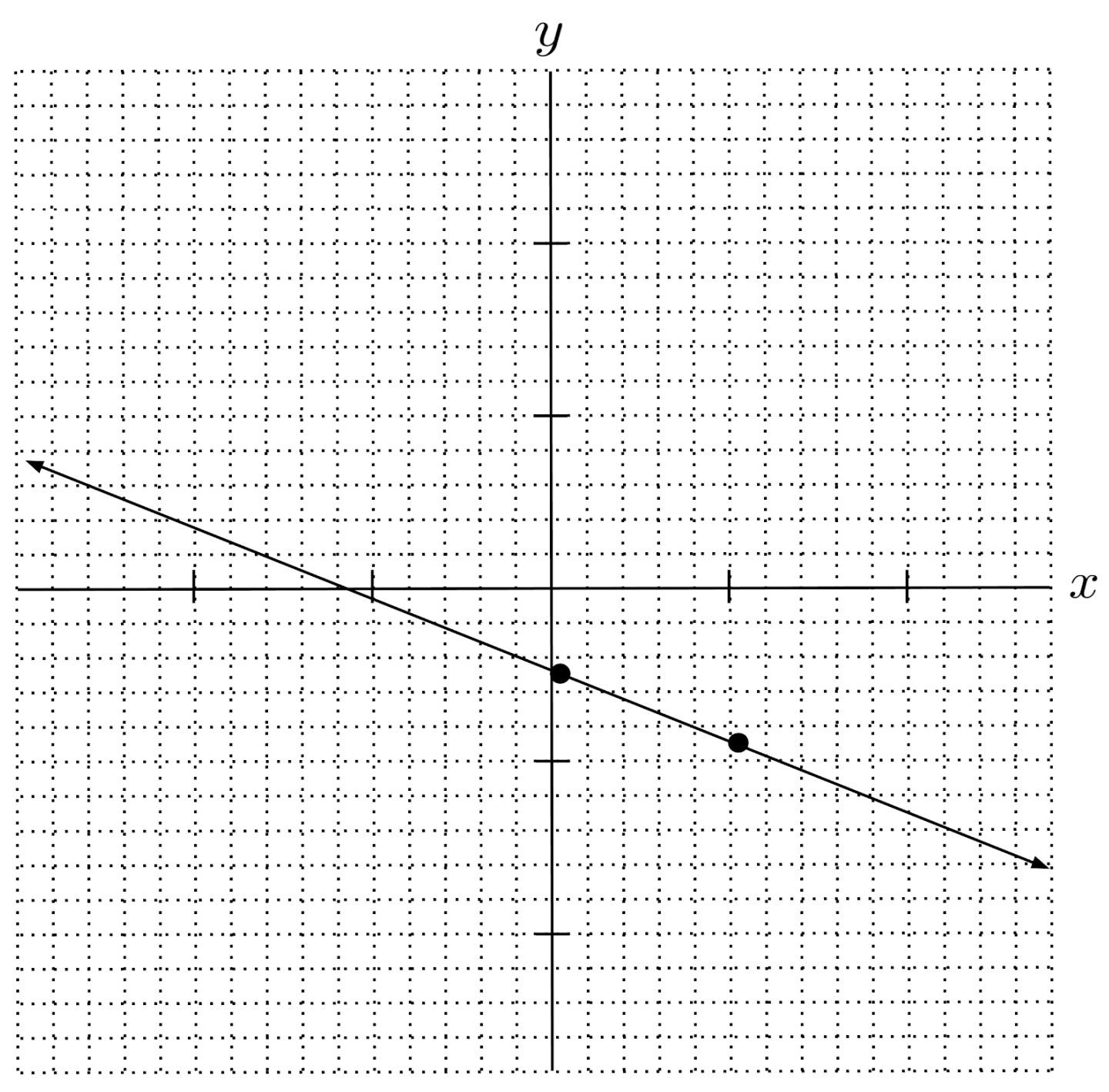
This post is part of the book Justin Math: Algebra. Suggested citation: Skycak, J. (2018). Point-Slope Form. In Justin Math: Algebra. https://justinmath.com/point-slope-form/
Want to get notified about new posts? Join the mailing list and follow on X/Twitter.